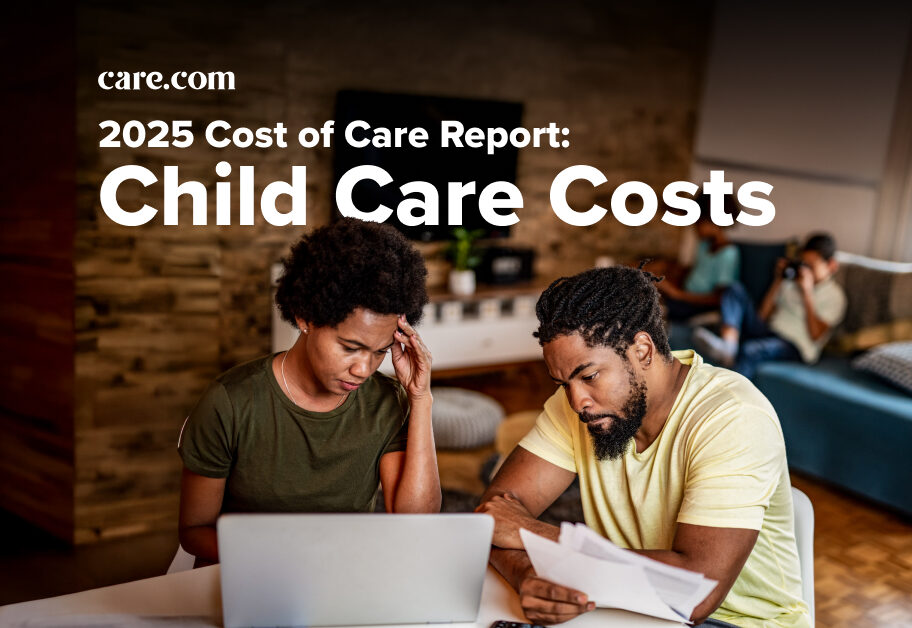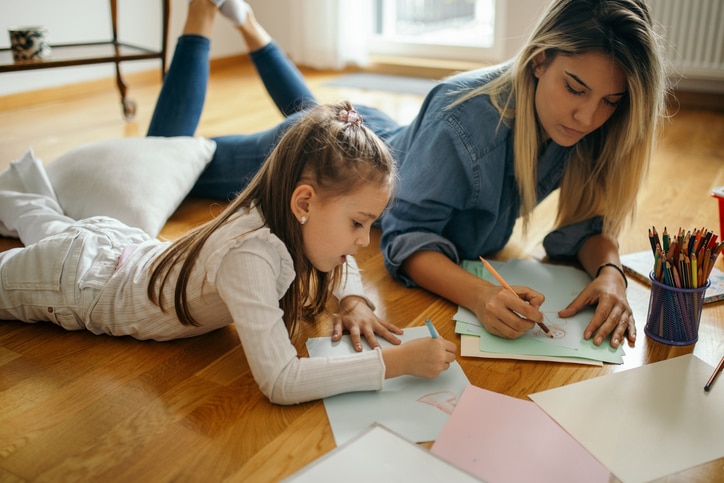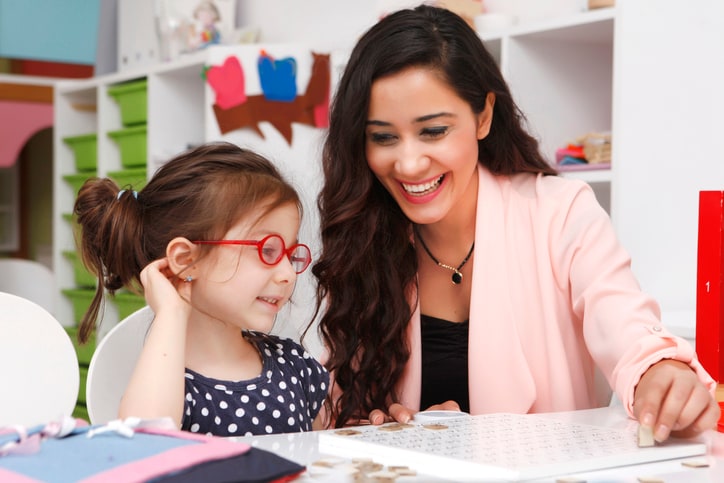Every parent wants to give their kids the tools to be kind and thoughtful, along with the ability to take responsibility for their actions, but real talk: Kids push their parents’ buttons on the daily, making the “imparting knowledge” part of parenting astonishingly difficult at times. (Ever tell your child they’re not going to watch TV ever again if they don’t stop doing something? Then you know.)
Of course, kids are never going to stop being kids, so expecting their behavior to change by sheer force of will is pretty much the definition of insanity. On the flip side, when parents personally change how they approach difficult situations, they may be able to change some of their kids’ behavior while giving them important life skills.
The technique? Conscious Discipline, an approach developed by Becky Bailey, a clinical psychologist and teacher who encountered a “broken system” after years of working with students, teachers and parents.
“With Conscious Discipline, we’re being mindful and showing kids that we value how we act and respond. When we’re practicing it, we’re functioning from a higher level in our brain and noticing situations instead of blindly judging and reacting to them.”
— Amy Spiedel, master instructor of Conscious Discipline
“In a nutshell, Conscious Discipline is a brain-based framework of power skills and structures that supports adults first,” explains Amy Spiedel, master instructor of Conscious Discipline. “We, as adults, need to create the model for kids to follow. In behavior plans, ‘do what I say, not as I do’ isn’t effective.”
Curious about Conscious Discipline? Here’s expert insight on what could be a game-changer for your family.
What is conscious discipline for parents?
Conscious Discipline for parents is an approach that emphasizes the importance of adult self-regulation in modeling and teaching children effective emotional management and conflict resolution. It shifts the focus from traditional punitive methods to understanding and changing the adult’s behavior as a means to guide children positively.
A far cry from the days of “kids ought to be seen and not heard,” Conscious Discipline is a method that tackles adults’ behavior in order to show — not tell — children healthy ways of dealing with conflict and difficult situations. “With Conscious Discipline, we’re being mindful and showing kids that we value how we act and respond,” Spiedel says. “When we’re practicing it, we’re functioning from a higher level in our brain and noticing situations instead of blindly judging and reacting to them.”
“In order for children to be able to settle down and manage their emotions, parents need to be regulated in their emotions and their reaction. The child responds to the parent.”
— Tovah Klein, clinical and developmental psychologist
The part of the brain that holds our values, problem-solving skills and — ahem — composure is the prefrontal cortex, and, as Spiedel explains it (and many parents can attest to), when you’re seeing red after something your kid did, it goes offline, making it nearly impossible to pull out tools that are helpful. Instead, you might yell, dole out a random punishment or even say something you regret. While this may curtail difficult behavior in the moment, this type of discipline doesn’t work long term.
A better solution? The goal is to figure out effective tools when you’re not in a blind range and then use techniques that help calm you when you’re getting worked up so you can pull out said tools.
“In order for children to be able to settle down and manage their emotions, parents need to be regulated in their emotions and their reaction,” explains Tovah Klein, who holds her doctorate in clinical and developmental psychology and is the director of the Barnard College Center for toddler development and author of “Raising Resilience.” “The child responds to the parent. The parent is the one helping to regulate the child’s emotions. Emotions are what underlie a behavior, so it’s critical for a parent to check their own reaction first, exhale, stay grounded, and then approach the child and help them with their behaviors and emotions of the moment.”
How do you use conscious discipline in the moment?
Almost everyone knows that having an emotional outburst to kids’ behavior isn’t effective. But how — pray tell — can parents consistently remain calm, measured and in a state to teach (the best way to curtail unwanted behavior) when kids can get under parents’ skin like no other? According to Spiedel, in the moment, or when you feel your heart rate starting to rise, do these three things to calm yourself down so you can best handle the situation:
- Smile. “You don’t want to look like a maniac, smiling at your child when you’re feeling angry, but just gently push the muscles up at the corners of your mouth,” Spiedel explains. “It sends a signal that you can start to relax.”
- Breathe. “Take a few deep breaths,” Spiedel says. “This gets the oxygen flowing and helps you compose yourself.”
- Relax. “One way to relax is to tense your muscles and then release,” she says. “This helps turn off the fight or flight response. However, it’s important to practice all of these things in a conscious state, so you know how to access them when you need them most.”
“Emotions are what underlie a behavior, so it’s critical for a parent to check their own reaction first, exhale, stay grounded, and then approach the child and help them with their behaviors and emotions of the moment.”
— Tovah Klein, clinical and developmental psychologist
As Spiedel explains, the brain can’t differentiate between real and perceived threats or physical versus psychological ones. (Hence, your clenched jaw, breath holding and rising heart rate when you start getting angry.) “When you start to feel like you’re going off the rails, you want to recognize that — along with why it’s happening — so you can change course,” she says. “It’s important to remember that your child’s behavior is happening in front of you, not to you. When you join in on out-of-control behavior, you’re no longer guiding the ship, as kids respond to their parents’ emotional state.”
The result? Frustrated parents and kids who follow in their footsteps. “Helping a child move through tough emotions and become calmer means starting off in that place as a parent,” Spiedel points out.
“When you join in on out-of-control behavior, you’re no longer guiding the ship, as kids respond to their parents’ emotional state.”
— Amy Spiedel, master instructor of Conscious Discipline
Annelise Cunningham, clinical psychologist and neonatal intensive care unit neurodevelopmental assessment and infant mental health postdoctoral fellow at Lurie Children’s Little Ones program in Chicago, agrees that checking yourself before addressing your child is key. “Parents and caregivers should practice self-regulation skills just as much as we encourage children to,” she says. “If parents have lost it, they won’t be much help to their child to provide any teaching, kindness or redirection. On the flip side, when we take a moment to self-regulate, we can approach challenging behaviors from a place of objectivity, problem-solving and emotional availability for children.”
What is the purpose of Conscious Discipline?
Being more conscious and coming from a place of wanting to problem solve and impart knowledge doesn’t only eliminate power struggles and help make days more pleasant, it also gives kids valuable life skills.
According to their website, the purpose of Conscious Discipline is to “offer solutions for social-emotional learning, discipline and self-regulation … Once instilled, these essential skills will last a lifetime and positively impact generations to come.”
How can giving consequences work better than punishment?
While a good chunk of Conscious Discipline is about parents and caregivers regulating their emotions and reactions, there also are consequences — not punishments — for kids.
“Consequences for behavior should always be focused on a learning opportunity to improve for next time rather than creating fear about making mistakes.”
— Parker Huston, pediatric psychologist
Unlike traditional punishments (taking away the iPad), consequences help children take responsibility for their actions and understand how their behavior affects the world around them (Conscious Discipline places consequences into three categories: Natural, Logical and Problem Solving). There are a number of Conscious Discipline printables that outline the differences between punishments and consequences, but ultimately, consequences teach kids how to problem solve while punishments make them feel bad for having them.
“Punishment is not a very effective teaching tool in isolation because it sends a negative message (don’t do this), rather than helping children learn how to manage a situation better the next time.”
— Parker Huston, pediatric psychologist
“Punishment is not a very effective teaching tool in isolation because it sends a negative message (don’t do this), rather than helping children learn how to manage a situation better the next time,” explains Dr. Parker Huston, clinical director of On Our Sleeves and pediatric psychologist at Nationwide Children’s Hospital in Columbus, Ohio. “Consequences for behavior should always be focused on a learning opportunity to improve for next time rather than creating fear about making mistakes. Children are constantly learning how to better manage their emotions and behavior. Mistakes are learning opportunities if parents can step back and see the bigger picture.”
What are the core components of Conscious Discipline?
Before children can heed the message of any type of consequence, parents and caregivers should make sure kids feel both safe and connected (to either their parent or caregiver). In Conscious Discipline, there are three Core Components:
- Safety. When kids are overwhelmed or engaging in negative behavior, parents and caregivers should first make sure they feel safe. This addresses their fight, flight or freeze reflex, which makes learning impossible while activated. (More on this in a bit.)
- Connection. Next, parents and caregivers should make sure children’s emotional needs are met and that they feel loved.
- Problem solving. Once kids feel both safe and connected, they’re in a place to problem solve, make better choices and figure out what they can take away from the situation.
What key areas should adults focus on?
In addition to the Core Components, in Conscious Discipline there are the Seven Powers for Conscious Adults. Focusing on these key areas help parents and caregivers remain calm and in control during challenging times. The powers and their goals, which aim to aide in self-regulation, are as follows:
- Perception. Goal: Taking responsibility for your own upset.
- Unity. Goal: Offering compassion to others and to yourself.
- Attention. Goal: Creating images of expected behavior in a child’s brain.
- Free Will. Goal: Learning to connect and guide instead of force and coerce.
- Acceptance. Goal: Learning to respond to what life offers instead of expecting things to go your way.
- Love. Goal: Seeing the best in others in order to stay in the higher centers of your brain (so you can consciously respond).
- Intention. Goal: Teaching a new skill rather than punishing others for lacking skills.
How is a safe place used in Conscious Discipline?
When kids are out of control and are having a hard time managing their emotions, Conscious Discipline advises going to a safe place to calm down — hence, Safety being a Core Component.
A safe place for parents and caregivers first
Before anything, though, parents and caregivers need to regroup and go to their safe place. The one place you may not be bothered? The bathroom! Spiedel recommends going to the bathroom for a few moments to regulate yourself before dealing with others. “Shut yourself in the bathroom, look in the mirror and smile, take a breath, relax and wish your children well before heading out,” she says.
A safe place for the child
Once you’ve regrouped, take your child to their safe place, which could be anyplace from your lap to a bean bag chair. “It should be a place that soothes their soul,” Spiedel says. When kids have a space where they feel safe, it will help them relax, and eventually, problem solve.
Having a safe place is different from its (very) distant cousin, timeout, as the former helps kids feel safe and loved, the other, depending on how it’s done, leaves kids to deal with their emotions on their own. “The classic view of a timeout is that of a punishment meant to send a message that parents are angry about bad behavior,” Huston explains. “Most parents use timeouts in anger to send a child away. Giving a child a safe space to calm themselves is the same as what most clinicians advise about an effective timeout.
Other key components of using this safe space method, according to Huston:
- Teach calming strategies and mindfulness during everyday interactions so children can use them when they are upset.
- Provide a safe environment for the child to practice these self-management strategies.
- Move the child to this different setting (the safe space) to help cue them to enact their calming strategies and regain composure.
Additionally, when a child is in their safe place, it’s a good opportunity to label what they’re feeling, so they better make sense of what’s happening. “Labeling feelings and modeling behavior are helpful tactics because they are relational,” Cunningham says. “When we label thoughts, feelings and behaviors, we are improving the working models or scripts children have cognitively to guide them through the world.”
What are some examples of how to use Conscious Discipline?
Conscious Discipline can help in almost any situation, but depending on the child and the scenario, it can look different. Here are a few ways to use Conscious Discipline in challenging scenarios.
Hitting
When one child hits another, first make sure the victim is OK. After that, ask the aggressor “the why” behind their behavior. “Say: ‘That wasn’t helpful and it was hurtful, but there was something you were trying to accomplish. What was it?’” Spiedel says. “You don’t want to isolate anyone as the bully, as the aggressor needs tools, as well as the victim. But by asking about the intent and then about a better way to accomplish that, you’re teaching the child a new skill.”
“Mean” behavior
For younger kids, who can’t necessarily answer why they did what they did, you may have to talk for them so they better understand how they’re feeling. “Before anything, a child has to understand their own emotions,” Klein says. “Don’t shame a child for doing something like grabbing another child’s ball — it can undermine positive development. Instead, start with their emotions: ‘You were so angry that you grabbed your friend’s toy and threw it. That upset your friend. It’s OK you are angry, but let’s find another way to show that.’ Then give an action such as stomping their foot or hitting a pillow.”
Not listening
Every parent has been there. You tell your child to walk on the sidewalk, but instead they run, then boom! They fall and get hurt. Should you say: “See? I told you to walk?” No. Instead, Conscious Discipline recommends saying something like: “Oh no, you were running on the sidewalk and then you fell. That must have hurt. Let’s get you a Band-Aid.” The thinking is that the natural consequence will be the lesson in and of itself.
Are you going to nail it every time? Of course not. But even when you don’t, you have the ability to use tools to recover. “When you lose your cool, you can always regulate yourself,” Spiedel says. “Say something like: ‘Wow, I wasn’t breathing, I wasn’t being conscious.’ Your kids will pick up on that, too.”






